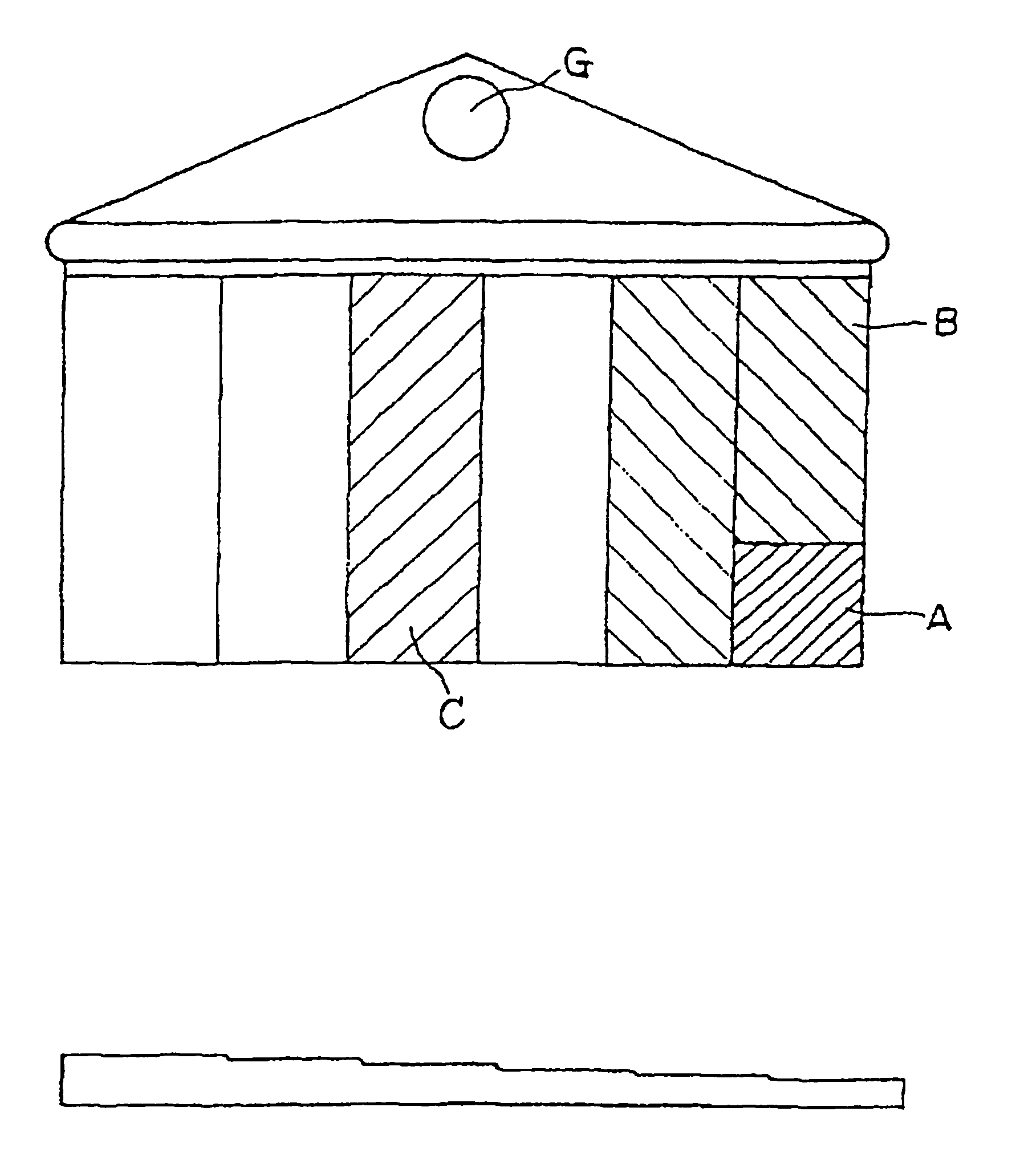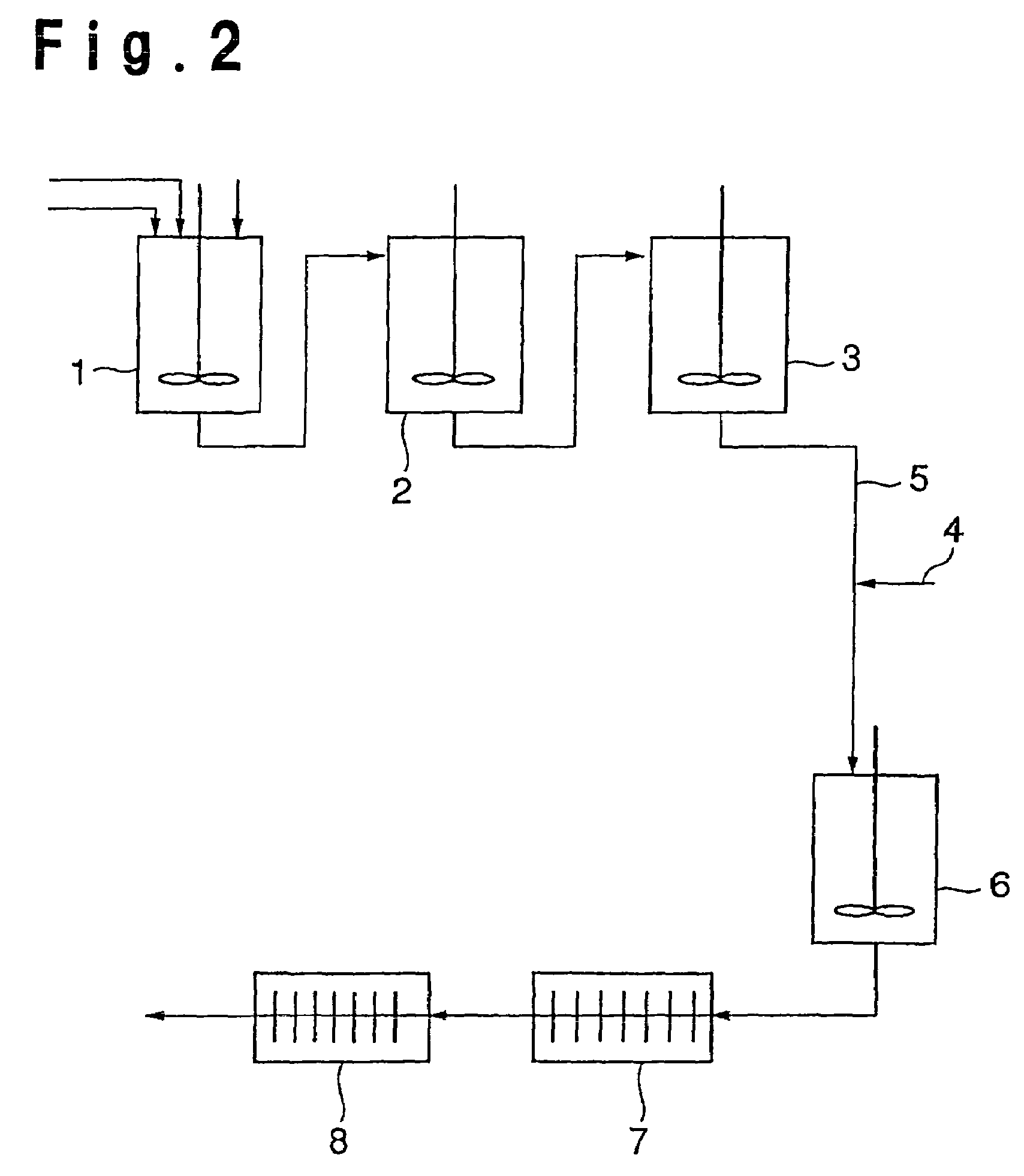Polyester resin, molded product made thereof and process for production of polyester resin
a technology of polyester resin and molded products, which is applied in the field of polypropylene resin, can solve the problems of increasing the amount of polyester resin by-products, environmental pollution, and deterioration of polyester resin, and achieves good cracking resistance to environmental stress, good taste deterioration resistance, and good deterioration resistance of body parts.
- Summary
- Abstract
- Description
- Claims
- Application Information
AI Technical Summary
Benefits of technology
Problems solved by technology
Method used
Image
Examples
application example
of Polyester ③
[0134]The polyester resin of this embodiment thus obtained is useful particularly for a bottle for a carbonated beverage, whereby it is possible to obtain a bottle excellent in transparency, strength, taste-deterioration resistance of the contained beverage, while suppressing elution of antimony.
[0135]Specifically, it will be melt plasticized by a usual method to obtain a molding material. And, it is suitably used for molding an injection blow bottle to mold a bottle by stretch blow molding by biaxially stretching in a blow molding mold, after forming a preform by injection molding. The injection molding conditions at that time may be within ranges which are commonly employed. For example, the cylinder temperature is from 260° C. 300° C., the screw rotational speed is from 40 to 300 rpm, the injection pressure is from 4×106 to 14×106 Pa, and the mold temperature is from about 5 to 40° C., and with respect to the stretch blow molding conditions, the stretch temperature ...
example 1-1
[0246]Using a continuous polymerization apparatus comprising a slurry preparation tank, esterification reactors of two stages connected in series thereto and melt polycondensation tanks of three stages connected in series to the second stage esterification reactor, terephthalic acid and ethylene glycol were continuously supplied in a weight ratio of 865:485 to the slurry preparation tank, and a 0.3 wt % ethylene glycol solution of ethyl acid phosphate, was continuously added in such an amount that the content as phosphorus atoms (P) based on the formed polyester resin would be 9 weight ppm, followed by stirring and mixing to obtain a slurry. This slurry was transferred to the first stage esterification reactor set for an average retention time of 4 hours in a nitrogen atmosphere at 260° C. under a relative pressure of 50 kPa (0.5 kg / cm2G) and then to the second stage esterification reactor set for an average retention time of 1.5 hours in a nitrogen atmosphere at 260° C. under a rel...
examples 1-2 to 1-12
[0256]A polyester resin was produced in the same manner as in Example 1-1 by using the compound as identified in Table 1 as the phosphorus compound and adding it in such an amount that the content as phosphorus atoms (P) based on the formed polyester resin would be the amount as identified in Table 1, and adding other materials in such amounts that the contents as magnesium atoms (Mg), antimony atoms (Sb) and titanium atoms (Ti), based on the formed polyester resin, would be the amounts as identified in Table 1. The obtained polyester resin was measured and evaluated in the same manner as in Example 1-1, and the results are shown in Table 1.
PUM
| Property | Measurement | Unit |
|---|---|---|
| number average particle weight | aaaaa | aaaaa |
| volume resistivity | aaaaa | aaaaa |
| heights | aaaaa | aaaaa |
Abstract
Description
Claims
Application Information
 Login to View More
Login to View More - R&D
- Intellectual Property
- Life Sciences
- Materials
- Tech Scout
- Unparalleled Data Quality
- Higher Quality Content
- 60% Fewer Hallucinations
Browse by: Latest US Patents, China's latest patents, Technical Efficacy Thesaurus, Application Domain, Technology Topic, Popular Technical Reports.
© 2025 PatSnap. All rights reserved.Legal|Privacy policy|Modern Slavery Act Transparency Statement|Sitemap|About US| Contact US: help@patsnap.com



